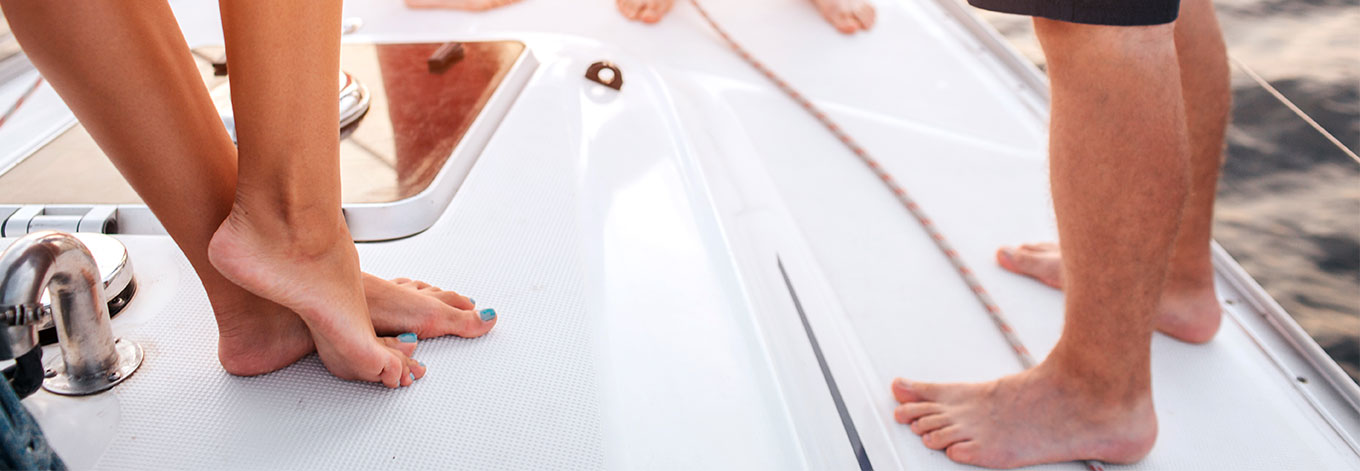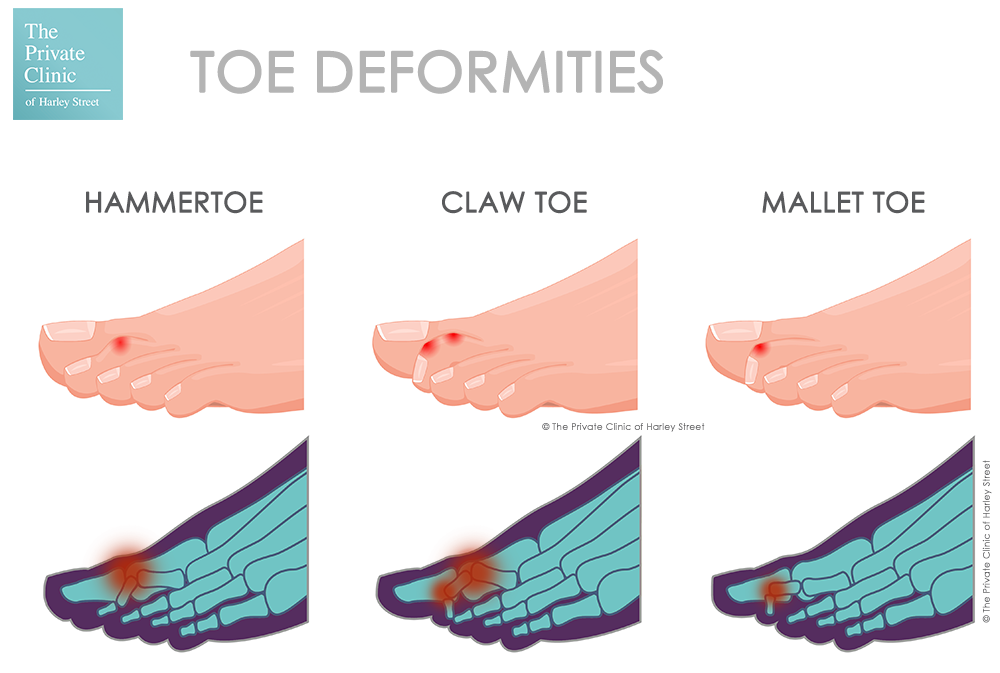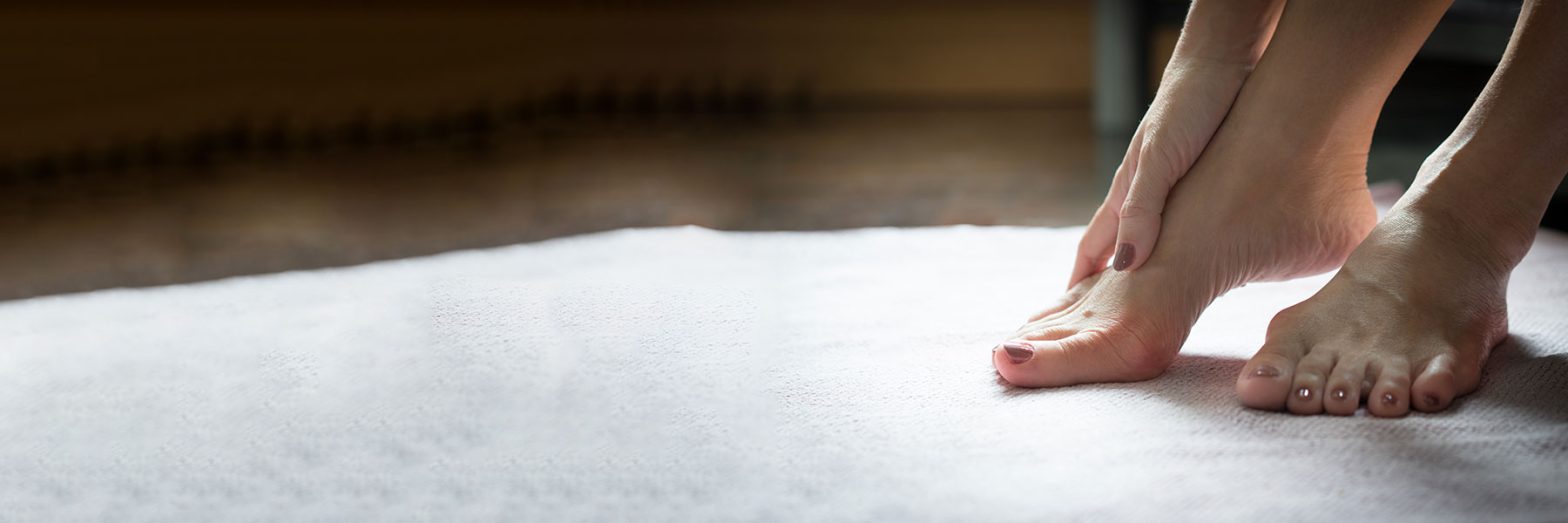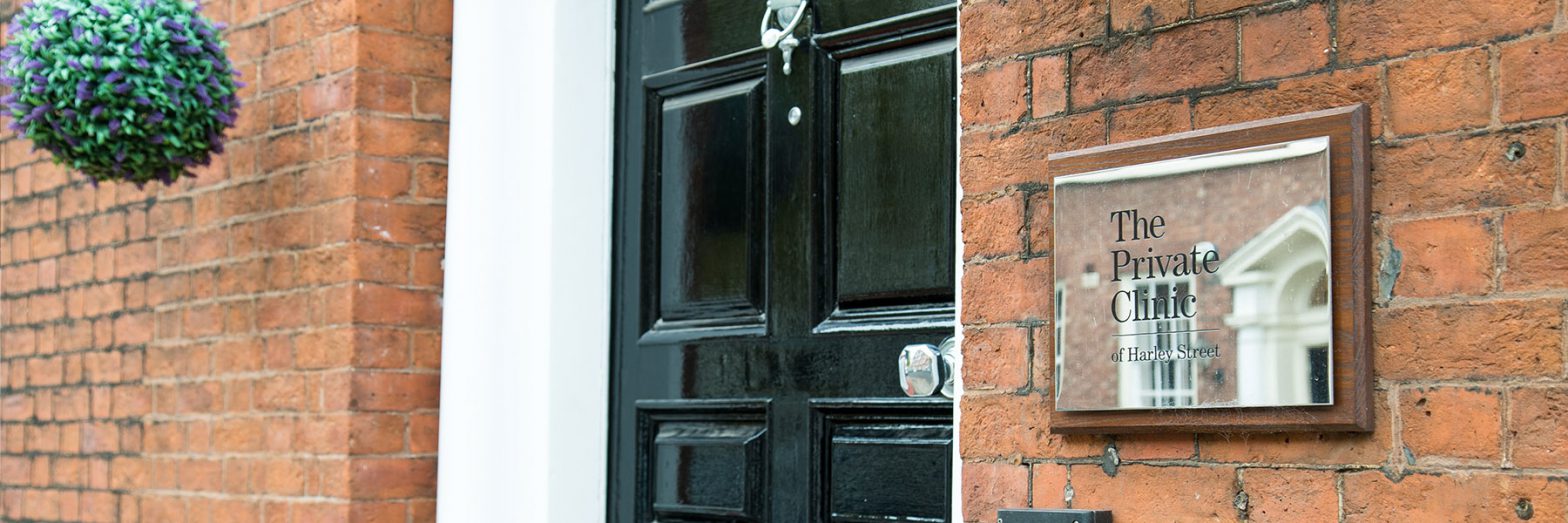
What are hammer, claw, and mallet toes?
It is probably not often that we pay attention to our feet. They are hidden away in shoes, socks and slippers most of the time and many of the changes concerning our feet can go unnoticed.
Usually the first sign of something being wrong with our feet is pain and then on closer inspection you may find the source.
Hammer, claw and mallet toes are when your toes sit in an unusual position instead of the standard flat toe position. Although each one affects a different part of the foot or toe, they all have related symptoms and can be treated in a similar way.

Hammertoe
What is a hammer toe?
A hammer toe is when your toe bends down towards the floor, bending at the middle toe joint. This causes the middle toe joint to sit higher than the rest of the toes.
What causes hammertoe?
Hammertoes are often caused by bunions, but they can be caused by repeatedly wearing ill-fitting or tight shoes, having torn ligaments or tendons in the foot, having a high foot arch or arthritis in the foot.
Hammer toes can go onto to cause corns or calluses as well as make it difficult or uncomfortable to walk or flex your foot.
Claw Toe
What is claw toe?
Claw toe often affects all the toes on the foot at the same time. The toes bend downwards at the middle joints and at the joints nearest the tip of the toes, but they also bend upwards at the joint where the toes and feet meet, which causes the toes to curl down towards the floor.
What causes claw toe?
A claw toe deformity often develops after an injury. Nerve damage can weaken the foot muscles and any inflammation can cause your toes to bend awkwardly into a claw-like position.
Underlying medical reasons for claw toes include arthritis, cerebral palsy, diabetes, Charcot-marie-tooth disease, and strokes. However, in many cases, the underlying cause is often never confirmed.
Claw toes can also cause corns, calluses and open sores as well as being uncomfortable and painful.
Mallet toe
What is a mallet toe?
A mallet toe bends downwards at the joint closest to the tip of the toe. It is most common in the second toe (next to the big toe) as this is often the longest of the four smaller toes, but it can occur in the third and fourth toes.
There are two types of mallet toe:
- Flexible mallet toes, where you are still able to move the toe.
- Rigid mallet toes, which is when the toe is frozen in a bent position with no movement
What causes mallet toe?
Mallet toes are often caused when the toe has been forced upwards repeatedly over time from wearing tight shoes for example. Other causes include arthritis, bone or muscle imbalances or injury to the toe.
Mallet toes can go on to cause corns, calluses, and ulcers as well as pain when wearing shoes and swelling.
Toe deformity treatment
How are hammertoe, claw toe or mallet toe treated?
At The Private Clinic, we pride ourselves on being able to offer our patients a minimally invasive hammertoe, claw toe and mallet toe treatment.
You will first have a thorough consultation with our expert consultant orthopaedic surgeon which includes an examination and X-ray to establish what the cause of your toe pain is and your suitability for surgery.
Our hammertoe, claw toe and mallet toe procedures are all performed as day cases under local anaesthetic. The procedure is done by keyhole surgical technique where geometric fractures are made to reposition the toe. No screws, plates, wires, or metal fixtures are used in the procedure which means your recovery should be quick and no need for crutches.
What aftercare is required after hammer toe, claw toe or mallet toe surgery?
Following surgery, you will be able to walk as normal once the anaesthetic has worn off. There is no need for crutches, and you will be encouraged to stay mobile to allow the toes to heal in a natural position.
You will have bandaging on the foot and an orthopaedic boot to wear for around 25 days before you return to the clinic for your follow up appointment. At the appointment, the dressing will be removed, and you will be able to wear a comfortable shoe such as a wide flexible trainer, so that your foot is still supported.
You will not be required to spend weeks resting and many patients return to work quickly depending on their role.
What are the advantages of the hammer toe, claw toe or mallet toe surgery technique at The Private Clinic?
- Exclusive to The Private Clinic in the UK, there is no other operation like this one.
- Minimally invasive procedure, toe surgery is performed under local anaesthesia using keyhole techniques.
- This is the only natural operation with no metal fixtures such as wires or screws being used.
- Orthopaedic Consultant Surgeon, Mr Bianchi is an expert in his field and has been carrying out foot operations for 15 years.
- Walk immediately after surgery, with no crutches or extensive downtime required.
- Minimal post-operative pain and aftercare.
- 2-3mm skin incisions which leaves no scar.
- Treatment carried out in our state-of-the-art London Fitzroy hospital.
- 24-hour patient helpline direct to your nursing team and surgeon, which means should you have any concern we are here to help.
- Our excellent reputation for patient safety and satisfaction, honest advice and outstanding care means your journey with The Private Clinic will be an exciting experience to a newfound confidence.
To find out more about hammertoe, claw toe or mallet toe surgery or to request an appointment with Orthopaedic Consultant Surgeon, Mr Bianchi at our London Harley Street, Manchester, and Bournemouth clinics, give us a call on 0333 920 2471 or you can also use our online contact form.







